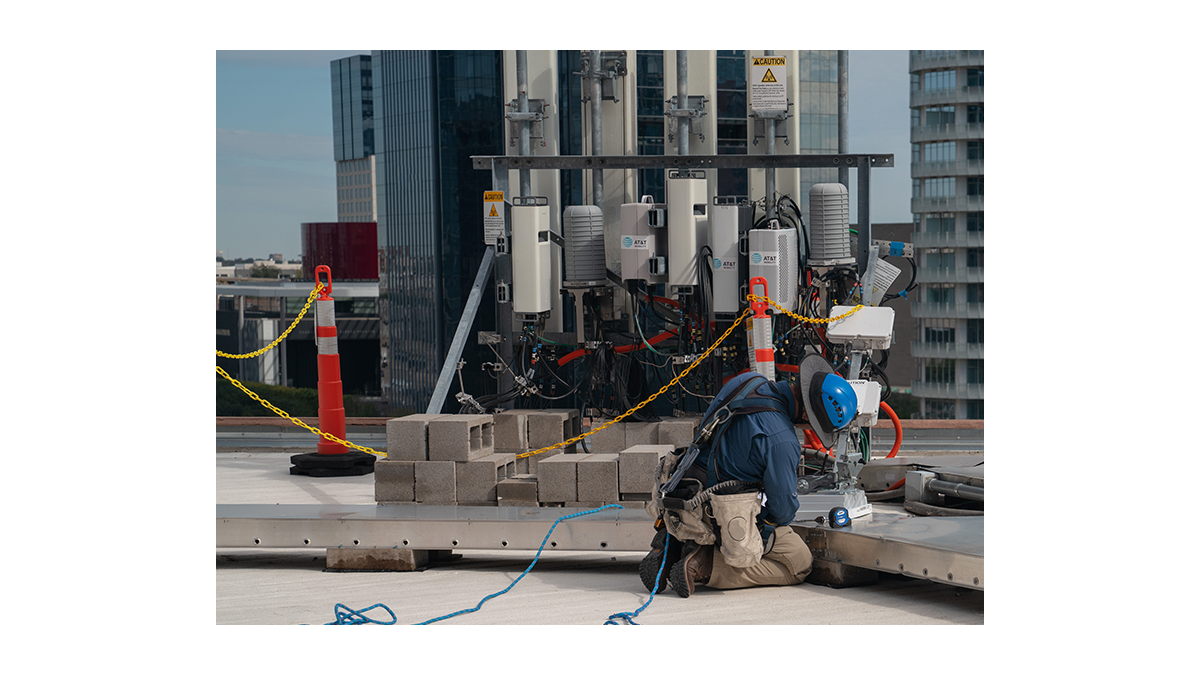AT&T's Jason Inskeep on the evolving private wireless landscape
'My team's kind of been like a SWAT team, attacking everything from our DoD [Department of Defense] customers to a couple [oil] refinery engagements,' said Inskeep, who works in AT&T's 5G Center of Excellence.

AT&T's Jason Inskeep has been working on private wireless networking for years. Whether that's a Wi-Fi network for a football stadium, a private cellular network in the unlicensed CBRS spectrum band for an oil refinery or a 5G network in AT&T's licensed spectrum for smart city applications, Inskeep has been working to assemble the right team with the right tools to meet customers' needs.
"Part of what we're trying to build here is a practice that – just like we have those necessary technical resources that sit on the [AT&T] wireline side doing SD-WAN and those kinds of things – we need to think about private cellular in the same way," he said.
"I've got that knowledge that customers crave," he added.
Figure 2:  Inskeep
Inskeep
(Source: AT&T. Used with permission.)
During his six-year tenure at AT&T, Inskeep has had several roles focusing on 5G, most recently as director for AT&T's 5G Center of Excellence (COE). Earlier this year, he became the senior assistant VP for the 5G COE within AT&T Business, working to translate customers' requirements into tangible solutions.
"My team's kind of been like a SWAT team, attacking everything from our DoD [Department of Defense] customers to a couple [oil] refinery engagements," he said. "My team's looming in the background."
Inskeep said that most of AT&T's work in private wireless networking remains under the radar. He declined to answer questions about how many private wireless networking customers AT&T has or the number of private wireless networks it operates. However, the handful of public announcements that AT&T has made hint at the business' size and scope:
A 5G network in Samsung's manufacturing center in Austin
A 5G smart city effort in National Landing, Virginia, near Amazon's 4.8-million-square-foot second headquarters
A private 5G test bed for the Texas A&M University System's Rellis Campus
A 5G network in the Ford manufacturing facility for its electric F-150 Lightning pickup, in Dearborn, Michigan
A 5G network to fill in coverage gaps near Phillips 66's oil refineries in Belle Chasse, Louisiana, with partner Accenture
For all these deployments, Inskeep explained that AT&T has had to assemble a diverse team to tackle all kinds of issues, whether that's financing, developer operations or technology.
"Each one of these [customers] is different," he said. "I firmly believe that I gotta be an ecosystem play. I have to be the best at what I do in my swim lane – which is network. I'm a network company."
Figure 1:  An AT&T technician installs a 5G radio.
An AT&T technician installs a 5G radio.
(Source: AT&T)
Inskeep said that, so far, AT&T has enjoyed significant traction in the industrial market for private wireless networks.
"Industrial is the easiest," he said. "That's where it's been the easiest conversation. They've had the most interest because they're at that digital transformation moment where they're trying to say, 'What's next?'"
Of course, AT&T isn't alone in targeting private wireless networking. A vast and growing array of companies are also hoping to tackle the same opportunity. AT&T's competitors include equipment providers like Ericsson, cloud computing companies such as Amazon, startups like Betacom and Celona and network operators such as Verizon. Indeed, Dish Network recently unveiled its own massive private wireless networking strategy.
It's dizzying, Inskeep agrees. And he said that's partly why AT&T is having so many conversations with customers on the topic.
"There are a lot of vendors in this space," he said, adding that customers are coming to him and saying, "'Jason, help me delineate which one is which ... Help me understand the difference between these different, disparate solutions.'"
Inskeep said that AT&T can act as either a prime integrator for a private wireless network or a partner to another company that is the primary customer contact.
"From our perspective, how we think about competition – we have spectrum," he said. "The finite resource in any wireless network is spectrum itself. So the ways that we can, from a LAN [local area network] perspective, maximize the spectrum and control opportunity for our customer, the better off we can give them scale over time."
Related posts:
— Mike Dano, Editorial Director, 5G & Mobile Strategies, Light Reading | @mikeddano
About the Author(s)
You May Also Like












